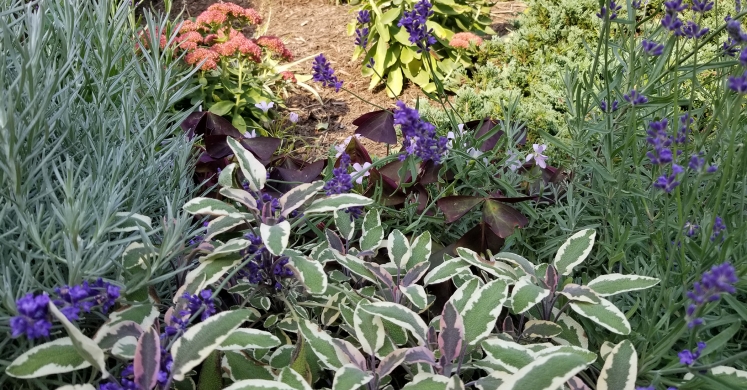Blog

Small Gardens, Big Impact: Hillside Garden in Monroeville
Small Gardens, Big Impact is a series of blog posts showcasing garden excellence at local homes. Published as part of our Greener Gardening series, each entry will focus on one of our green-thumbed neighbors to discover how they made their own lawns and gardens beautiful and sustainable.
Early this October, we visited a small garden with a big impact and were shown around by the garden’s designer and main installer, Jonathan King of The Village Gardener. Jonathan is a Phipps Sustainable Landcare Accredited Professional and his work focuses on creating beautiful spaces using sustainable gardening techniques. Jonathan and his crew install and manage gardens without the use of synthetic pesticides of fertilizers. They use thoughtful design to create beautiful gardens that enhance the local ecosystem.
This month’s featured garden is not only beautiful but solved a big problem by managing rainwater that would otherwise run downhill, eroding the hillside and impacting the lawn area. Steep clay hillsides like this are difficult places to garden and are a challenge for many Pittsburghers and surrounding suburbanites.

Jonathan’s first step in working the hillside garden was to thoroughly amend the soil with compost. He found that the best way to plant on the steep slopes was to create leveled spaces, or “benches”, often with upright flagstones supporting the uphill side of the planting area. Structural plants were placed into larger benches, or “stages”, using shrubs that would not only do well on the slope but also help to stabilize it (black lace elderberry, ninebark, spirea, weigela, dwarf barberry & holly and hibiscus). In addition, tough perennials were used that can thrive in full sun on steep, shale-clay slopes including catmint, variegated liriope, goldenrod, New England asters, yucca, sedums, Japanese blood grass and little blue stem grasses. Grasses are often a great addition to hillside plantings as their fibrous roots really hold the soil well. Rug juniper, previously planted, is also a great plant for these harsh conditions.

In addition to the flagstone used as backdrops for the “stages”, the Village Gardener used different kinds of rock throughout the design for both beauty and function. For example, ornamental rocks placed below the forsythia also provide a stable place to stand for pruning requirements in the future. In other sections, dry stream beds were created using various sizes of river rock to direct the flow of rainwater downhill. This slows the rate of water flow and allows for better infiltration along the front side of the hill. Higher up on the hill, small swales were dug out and edged with rocks. Swales are depressions with berms on the downhill side where water is captured and stored and can be directed. In this case, water is gently directed along the top of the hillside, ensuring that too much water doesn’t rush downhill eroding the soil. The final element was adding a 3” layer of natural, triple-shred bark mulch.

While creating a garden that slows and captures water, Jonathan really focused on beauty and form. He used repeating patterns of plants in lines that carry the eye along the hillside moving in waves across the space. The previously planted forsythia at the top of the garden begins this undulating pattern and the rocks and liriope continue the pattern. While designing the space, he conceptually divided the long, rectangular garden into smaller “panels”, each creating a distinctive “view” but flowing and combining together into an integrated whole. At the bottom of one of these panels is an herb garden complete with lavender, sage, parsley and dill. These useful plants also have pretty flowers. So this functional panel has use for the owners. During the installation, the Village Gardeners progressed from panel to panel, rather than planting from top to bottom, which made the steep slope easier to work with. In such a way, through a combination of good design, appropriate plant selection and sound organic landcare practices, the Village Gardeners transformed a “problem area” into a work of art.

Follow this link to learn more about sustainable landcare services including contact information for The Village Gardener as well as information about the Sustainable Landcare Accreditation training.
Photos © Paul g. Wiegman
